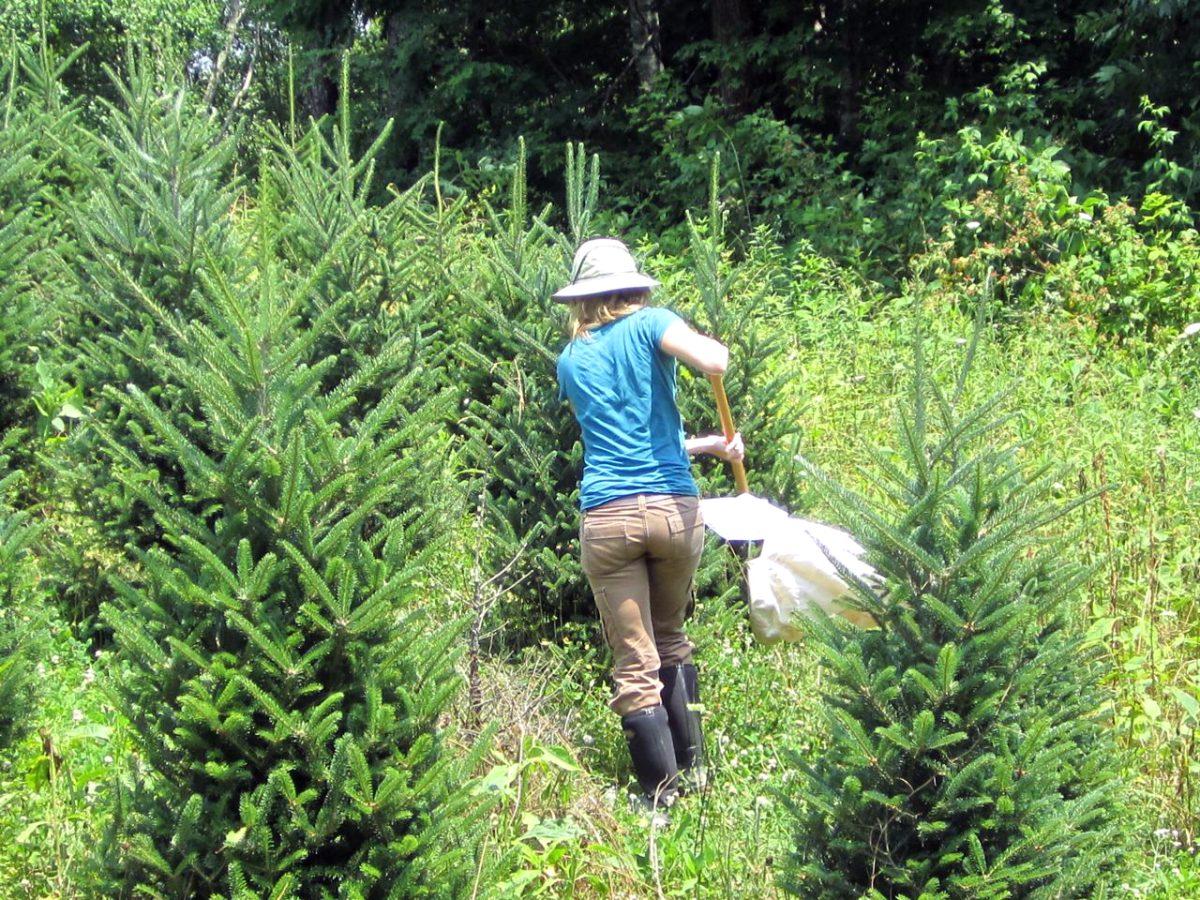For some time, bees across the country have been disappearing in rapidly growing numbers each year.
Since pollinators like bees are responsible for nearly 80 percent of the pollination of important food crops, the decline in bee populations has caused considerable alarm.
With the support of N.C. State, work is being done to slow the concerning decline of pollinators due to pesticides. Since receiving her Ph. D. in Plant Pathology from N. C. State University in 1988, Jill
R. Sidebottom, an extension specialist in forestry and environmental research, has worked to establish Integrated Pest Management Christmas tree farming in North Carolina.
IPM farming approaches attempts to control pests while using fewer pesticides in order to prevent harming humans and the environment.
Bees particularly thrive on the flowers and ground cover in the numerous Christmas tree farms in North Carolina, which is the second highest ranked state in the nation for Christmas tree production, only behind Oregon. There are over 30,000 acres of farms statewide.
However, interspersed with the flowers attracting pollinators to those fields are weeds attracting pests harmful to Christmas tree crops. In general, these pests are managed with pesticides and herbicides that are very toxic to bees.
Therefore, Sidebottom has been attempting to support bee populations by encouraging farmers to use IPM methods. Though it takes more work to grow trees using IPM methods, it is not only a cheaper way to farm but also produces more attractive trees. For these reasons, growers in North Carolina have generally been very willing to adopt the IPM system.
“Growers have paid a lot of attention to our work over the years,” Sidebottom said.
IPM farms have regularly scheduled reviews with a scientist who comes to scout and identify the types of pests in the grower’s fields.
Once the pests are identified, the reviewer and farmer work together to create a treatment for the property that uses small amounts of pesticides to target those specific pests. Because of this careful research and planning, IPM farming uses one-quarter to one-eighth the normal amount of pesticides.
Sidebottom and her team also encourage IPM farmers to use fewer herbicides in order to stunt the growth of negative weeds rather than just killing all of the ground cover. This allows the good flowers, such as white clovers, daises, dandelions and goldenrods, to continue to grow in the field as well.
“Let things grow up a bit and don’t keep things so manicured,” Sidebottom said. “Having diversity out there seems to be the most important thing.
Beekeepers in North Carolina have responded very positively to this work. Fields that were once blanketed in toxic pesticides have now become safe havens for bees.
“They say that now their bees have something to eat,” Sidebottom said, “and it’s been a good thing.”
It is difficult to create a balanced environment in which both trees and pollinators can thrive. Elongate hemlock scale is the number one pest for growers in North Carolina and spreads rapidly during hot and humid summers. However, summer is also when the most pollinators are out.
In order to effectively deal with pests as well as protect the pollinators during the peak of summer, IPM scientists are constantly reevaluating the methods they’re advising to growers.
They also work hard to maintain a very positive relationship with growers in this state.
“They need someone with an unbiased view out there giving them practical solutions for the problems they’re facing on their properties,” Sidebottom said.
In addition to the difficulties of honing in on the best treatments, growers are faced with a second set of challenges. These relate to education and getting the word out to buyers about their new style of farming.
“Buyers see a lot of weeds in the field and think the trees aren’t cared for, but they are,” Sidebottom said. “This is exactly what people want. It’s good for the environment.”
Sidebottom and her team are working to establish sources of information and educational opportunities for the public, such as pamphlets growers can provide their buyers, websites and a blog about IPM farming techniques.
Sidebottom was very positive about the successes that she and her counterparts have achieved so far.
“We are really fortunate in what we’ve been able to pull together as far as doing research,” Sidebottom said, “and we are very fortunate in North Carolina to have the support of N.C. State.”
For more information about the pollinator and pest control solutions that Sidebottom and her team are researching, one can visit their website at http://www.ces.ncsu.edu/fletcher/programs/xmas/index.htm .





